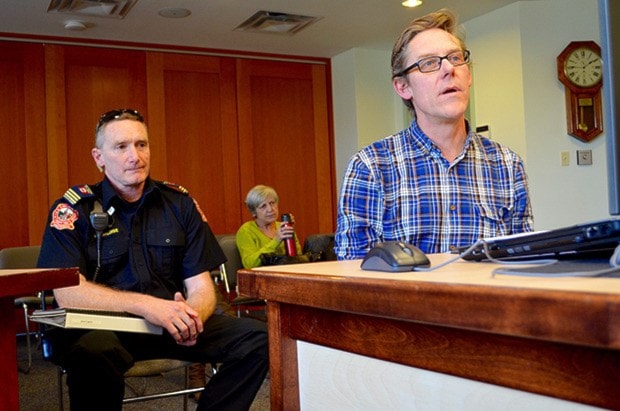It’s worth repeating.
Last year wildfire experts warned the City of Nelson that there’s a significant risk the city could be razed by wildfire, and on Monday afternoon they returned to reiterate their message and to urge action from council.
“Please leave here knowing that the risk to Nelson from wildfire is significant,” Bruce Blackwell said via phone link, while going through the updates to their wildfire protection plan.
“The key to reducing this risk is collaboration with the RDCK, BC Parks, utilities, licensees and other stakeholders.”
He reminded the councillors that there is funding available to help reduce the risk of wildfires through the UBCM Strategic Wildfire Protection Initiative, through the Forest Enhancement Society and through the Columbia Basin Trust.
“Nelson is doing great work, and the community is showing provincial leadership implementing fuel reduction projects and focusing on protecting critical infrastructure like trestles.”
That doesn’t mean local governments should “pat themselves on the back,” though.
“What we’ve learned from Fort McMurray and other wildfire events is that there is a significant amount of work to do, and this community is not unlike some of these others that have had large, damaging, catastrophic fires.”
Blackwell’s co-author John Cathro was at the meeting in person, and invited the councillors to look out the window of city hall towards the Big Orange Bridge — the direction where the Sitkum fire of summer 2015 came from.
He said new approaches to wildfire management now look outside municipal boundaries, taking into account elements such as prevailing winds and neighbouring forests that are vulnerable to lightning strikes and dry conditions.
That’s part of the reason why collaboration is so key — municipal governments can take care of each other by coming up with a regional strategy, and preparing to work together if they’re ever faced with another conflagration.
“The greatest risk for wildfires typically comes from outside the community. Wildfires can travel very fast,” Cathro said. “It makes sense to take a new look at how we understand the risks of wildfire to a community. We also now have a much better understanding of climate change.”
Their community action plan has evolved to take these things into consideration, and Cathro said the risks are growing. He recommended Nelson get ahead of the game before it’s too late.
“The time to pay attention to this is now.”
